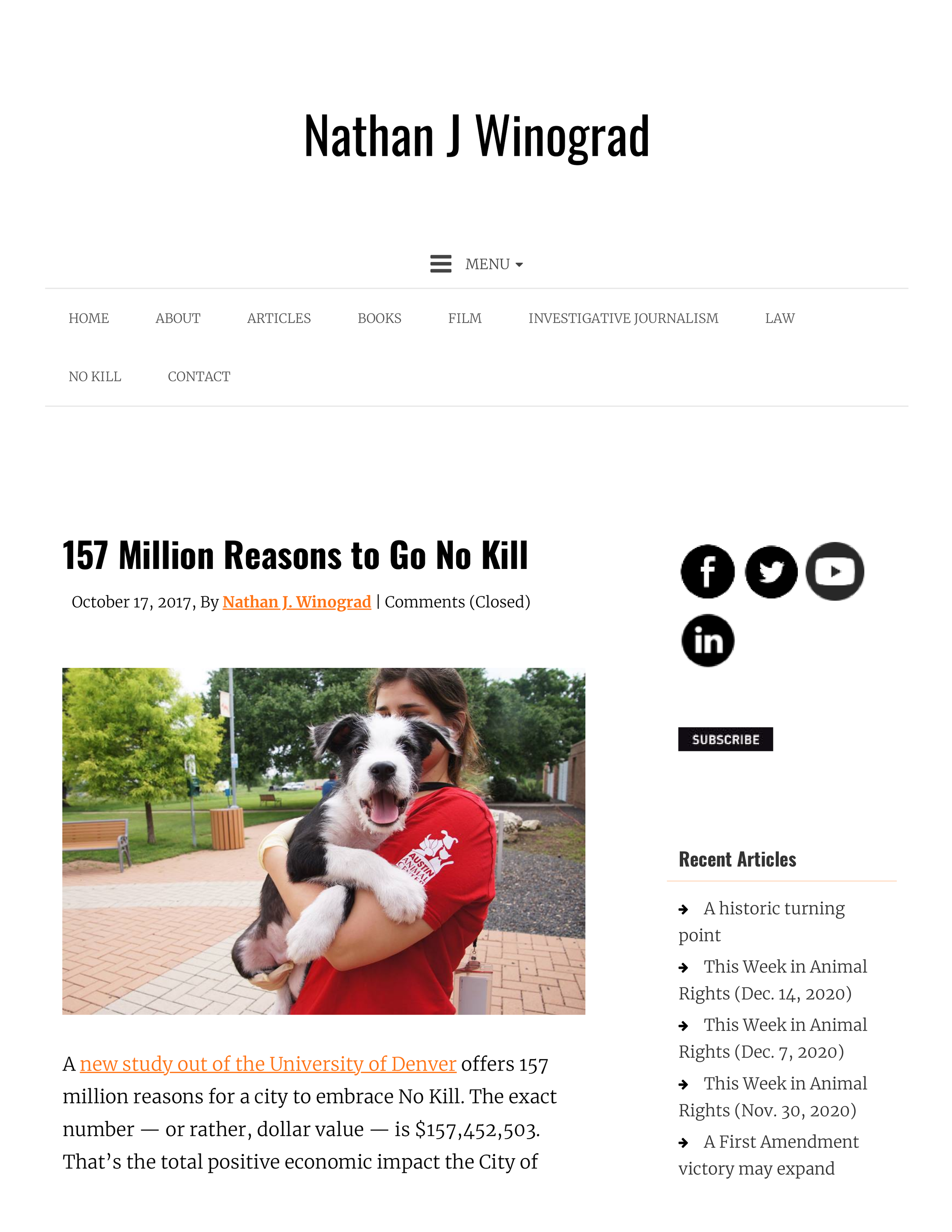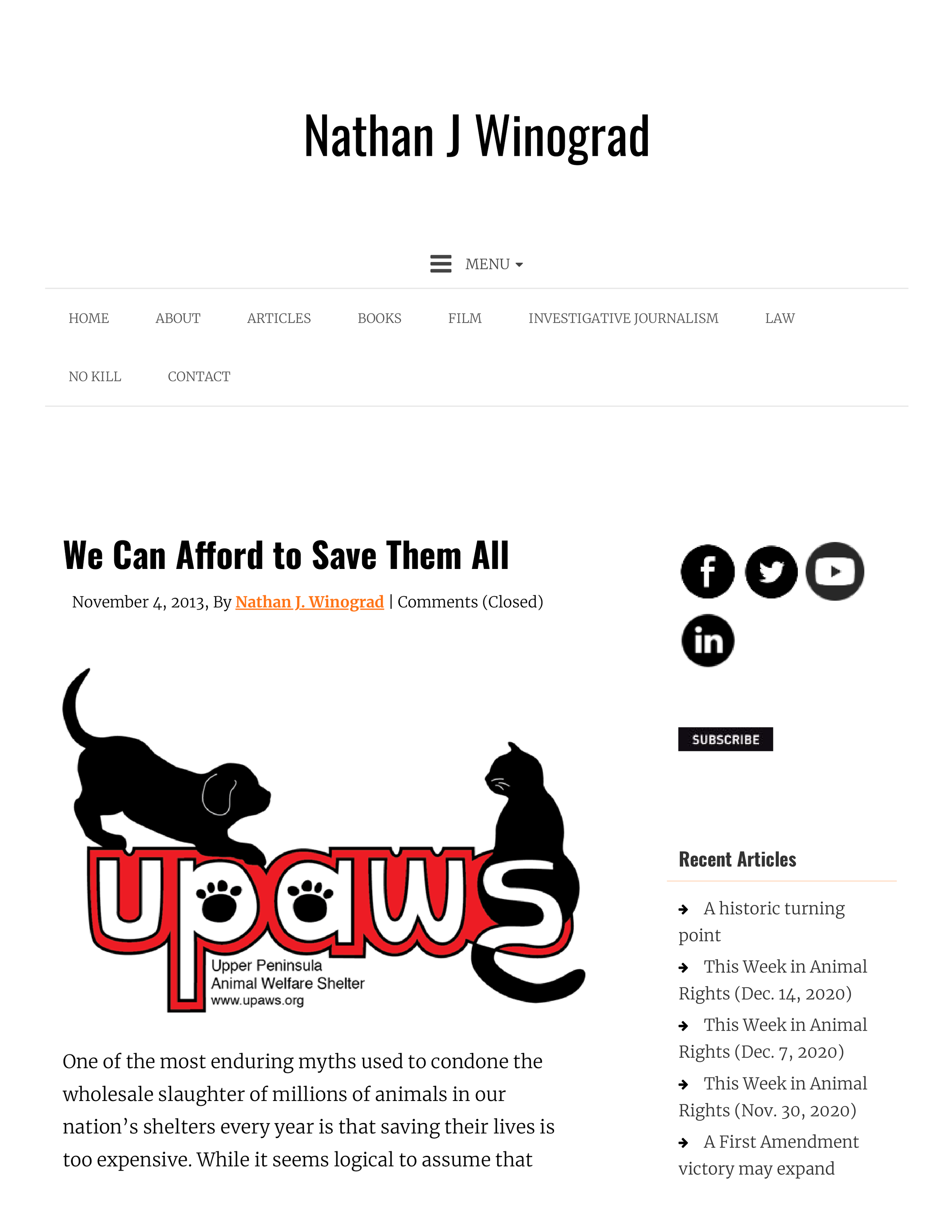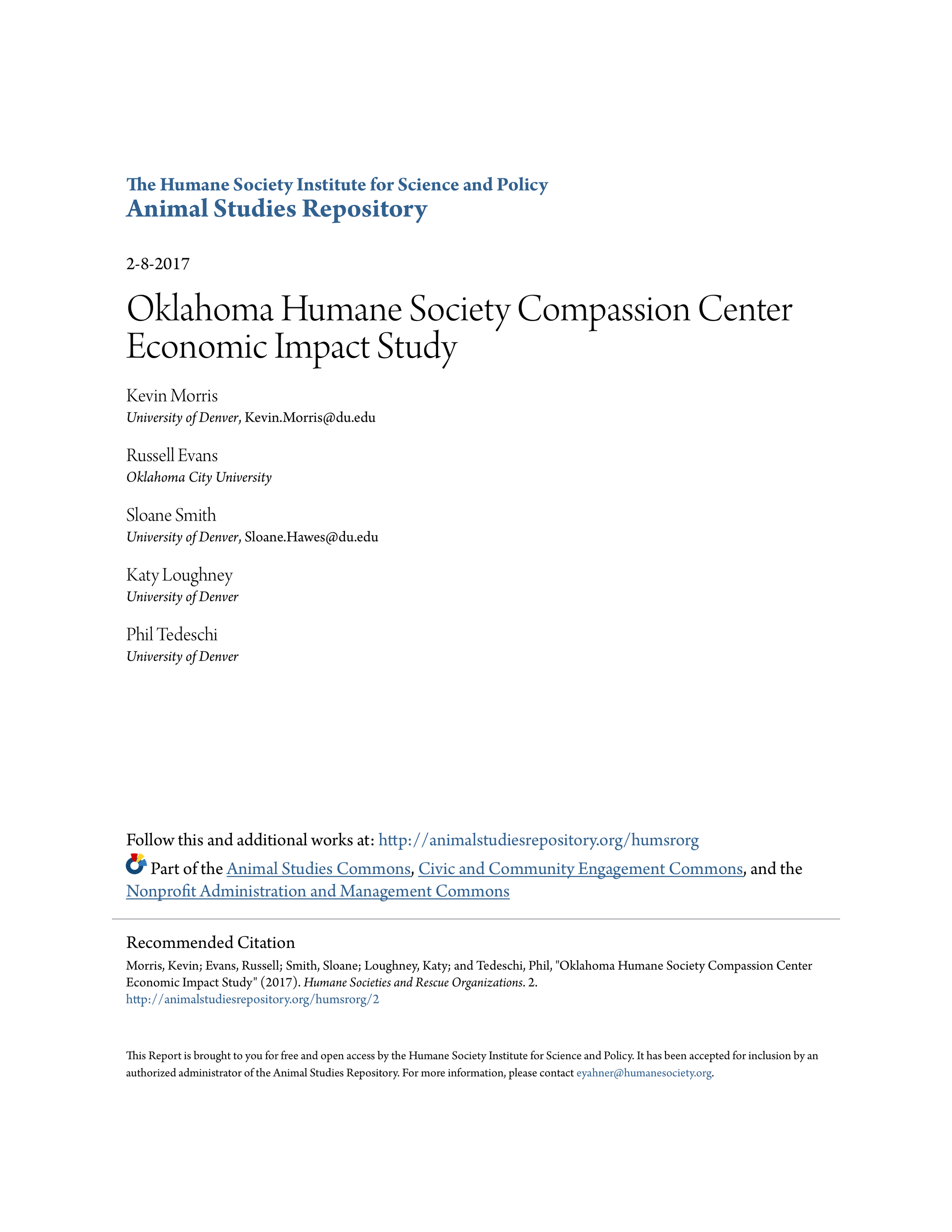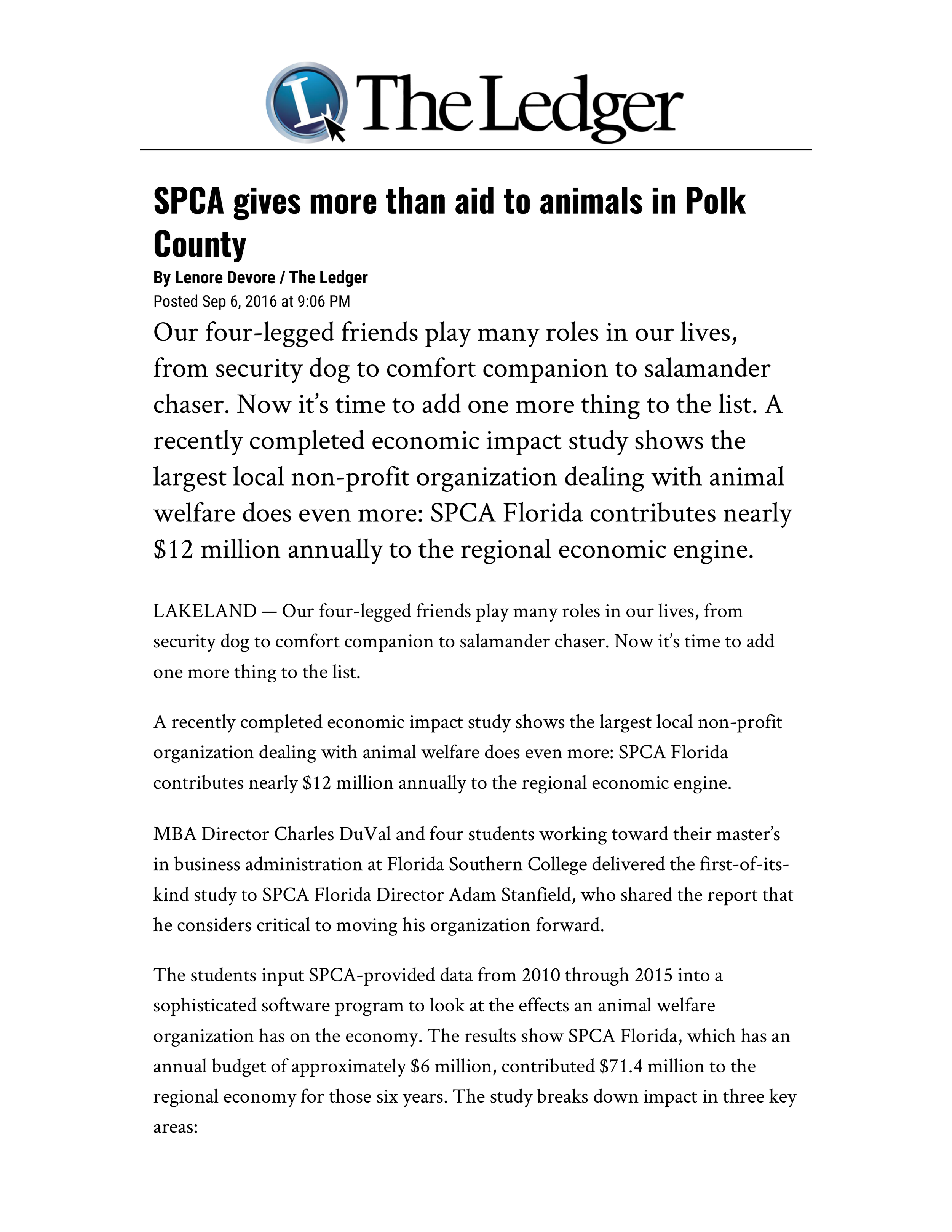Dollars & Sense
Click on the image to read and download the guide.
What does it cost to achieve No Kill? And does it necessarily cost more overall? Over the last several years, the No Kill Advocacy Center analyzed shelter funding and save rates in multiple states, the economic impact on shelter expenses and revenue, as well as the economic impact on community businesses and tax revenues. After analyzing that data, the answer became pretty clear: saving lives is more cost effective than killing.
No Kill is cost-effective, fiscally responsible, and a great economic boon to local communities. Municipalities which want to enact good policy and improve the local economy should invest in lifesaving at their local shelter. Given the cost savings and additional revenues of doing so (reduced costs associated with killing, enhanced community support, an increase in adoption revenues and other user fees, and additional tax revenues), as well as the positive economic impact of adoptions, a community cannot afford not to embrace No Kill.
Did our guide help you?





